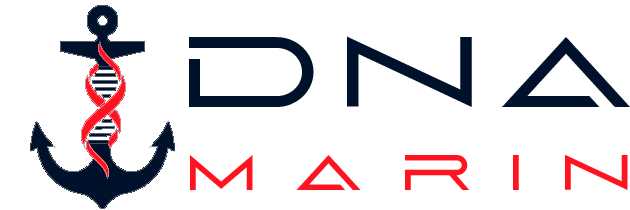ANA BAŞLIKLAR
İLERİ MÜHENDİSLİK
Güvenli ve verimli deniz taşımacılığı için gemi yapılarının rasyonel analizi esastır. “DNA Marin” müşterilere ileri mühendislik çözümleri sunar.
İleri mühendislik analizi, fiziksel bir yapının simülasyonudur. Karmaşık mühendislik problemleri, FEA yöntemi kullanılarak basit bir probleme dönüştürülür. İleri mühendislik standartlara, uluslararası kurallara ve genel mühendislik yaklaşımlarına göre ağırlık, titreşim, gürültü azaltma ve yakıt verimliliği açısından yeni tasarımların optimize edilmesinin önemli bir parçasıdır.
14 yıldan uzun bir tecrübe ile “DNA Marin”, deniz ve altyapı yapıları için gelişmiş simülasyon, mühendislik ve danışmanlık FEA / CFD hizmetleri sunar.
DNA Marin, 2022’de Ansys Startup Programına seçilmiştir.

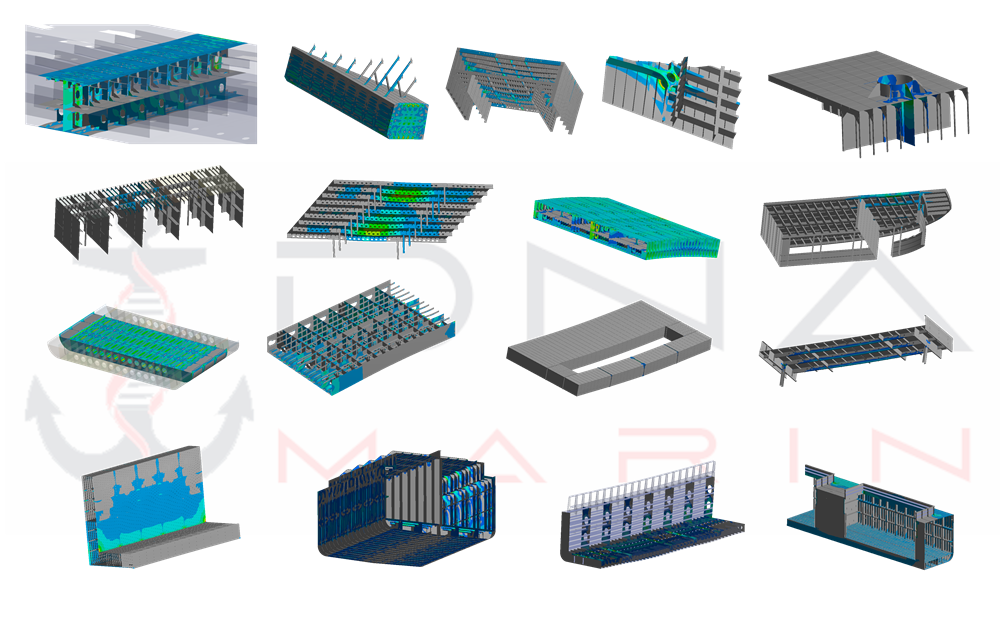
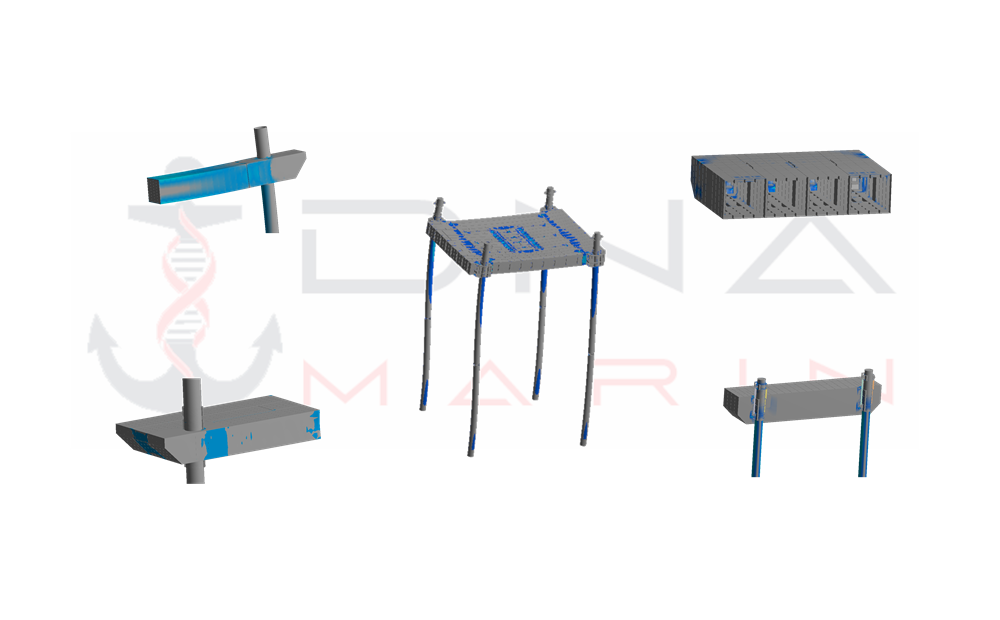
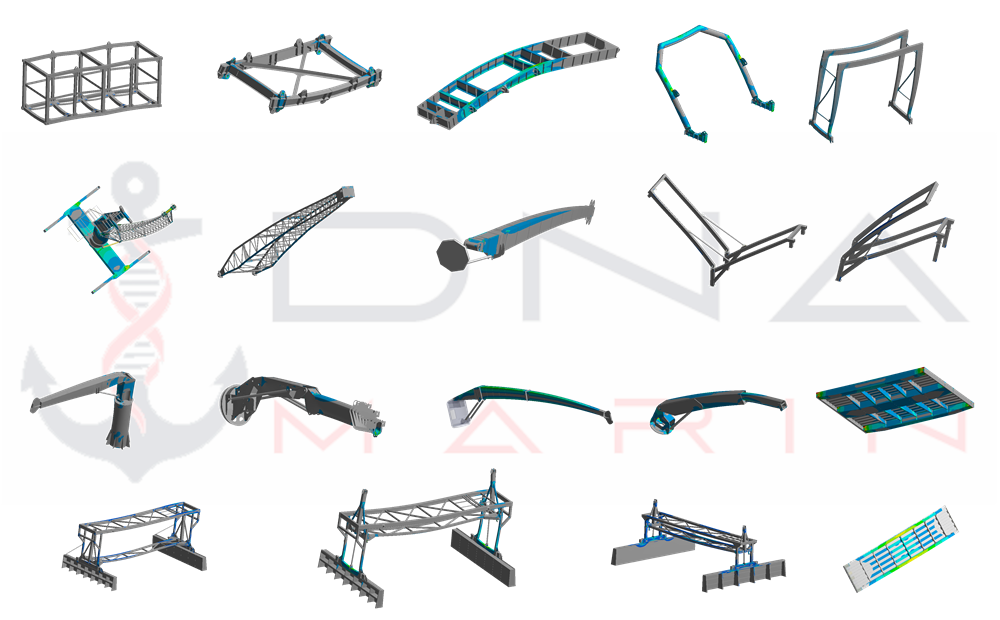
Gemi tasarım süreçlerinde ileri mühendislik analizinin avantajı aşağıdaki gibidir.
- Yapı optimizasyonları / yapı ömrü. (mukavemet, yorulma, burkulma, termal vb.)
- Gövde formu optimizasyonları. (gövde formu, denizcilik yeteneği, manevra vb.)
- (titreşim, akustik vb.)
 Global Strength Analysis a global model of the hull is normally used for the global strength analysis of the entire hull girder and its primary structural components. For 3D modelling of all the primary structural components, the loads can be applied realistically, and the structural behaviour of complex ship structures, including the interactions between the individual components, can be taken into account.
Global Strength Analysis a global model of the hull is normally used for the global strength analysis of the entire hull girder and its primary structural components. For 3D modelling of all the primary structural components, the loads can be applied realistically, and the structural behaviour of complex ship structures, including the interactions between the individual components, can be taken into account.
 Local Strength Analysis is carried out, if the strength of the structure is required to be proved by direct calculation procedures or classification rules. Local models are used for the strength analysis of secondary or special components as well as structural details. The main focus of the investigations is usually on the analysis of the local structural behaviour and/or the locally increased stresses at structural details and discontinuities.
Local Strength Analysis is carried out, if the strength of the structure is required to be proved by direct calculation procedures or classification rules. Local models are used for the strength analysis of secondary or special components as well as structural details. The main focus of the investigations is usually on the analysis of the local structural behaviour and/or the locally increased stresses at structural details and discontinuities.
The following studies are examples for local strength analysis,
- Stress analysis of equipment foundations (Bearing, crane, machinery, mooring equipment, deck machinery, underdeck supporting structures etc.)
- Fatigue analysis
- Linear and non-linear buckling analysis
Computational Fluid Dynamics (CFD), for predicting the flow pattern around ship hull has made much progress over the last decade. CFD analysis gives the opportunity to investigate ship behaviour digitally as hull form optimization. “DNA Marin” provides Computational Fluid Dynamic (CFD) methods to estimate ship hull performance. This is especially useful when looking to optimize the vessel’s hull form to improve fuel economy, especially for bulb designs. The difference of a few percentage points of resistance can lead to significant savings for vessel operators over the life of a vessel.
Hull form is optimized to provide vessels with good flow and resistance characteristics to ensure that a vessel’s behavior will be as envisioned by operators without having to conduct model basin tests.
The following studies are examples for CFD analysis,
- Hydrodynamics simulations (alternative to towing tank test)
- Aerodynamic analysis
- Propulsion systems
The Key benefits of using marine computational fluid dynamics (CFD) software are follows,
- Prediction of hull resistance
- Prediction of propeller performance including cavitation
- Simulation of self-propulsion, either by propellers or virtual disc
- Prediction of vessel motion, powered response and interaction with waves
- Combined aerodynamics and hydrodynamics simulations
- Combined fluid dynamics and stress resistance simulations
 A lifting appliance generally has no ‘redundancy’– so a single failure is enough to cause a major accident. For this reason, since the rules are strict, DNA Marin examines structures in terms of both reliability and optimization in accordance with legal frameworks, depending on the type of equipment and it’s purpose.
A lifting appliance generally has no ‘redundancy’– so a single failure is enough to cause a major accident. For this reason, since the rules are strict, DNA Marin examines structures in terms of both reliability and optimization in accordance with legal frameworks, depending on the type of equipment and it’s purpose.
There are both international and national rules specific to each equipment and the structure must be in accordance with these rules such as SOLAS 1974, LSA Code, MSC circulars, classification society’s rules, flag state requirements, ILO Convention 152.
For such complex structures, DNA Marin offers more realistic solutions with advanced engineering approaches. Apart from the structure, details are more important for the structural health. For this reason, DNA Marin cares about the the type / thickness of weld, joint / piston reaction forces and axle shear force / moment.
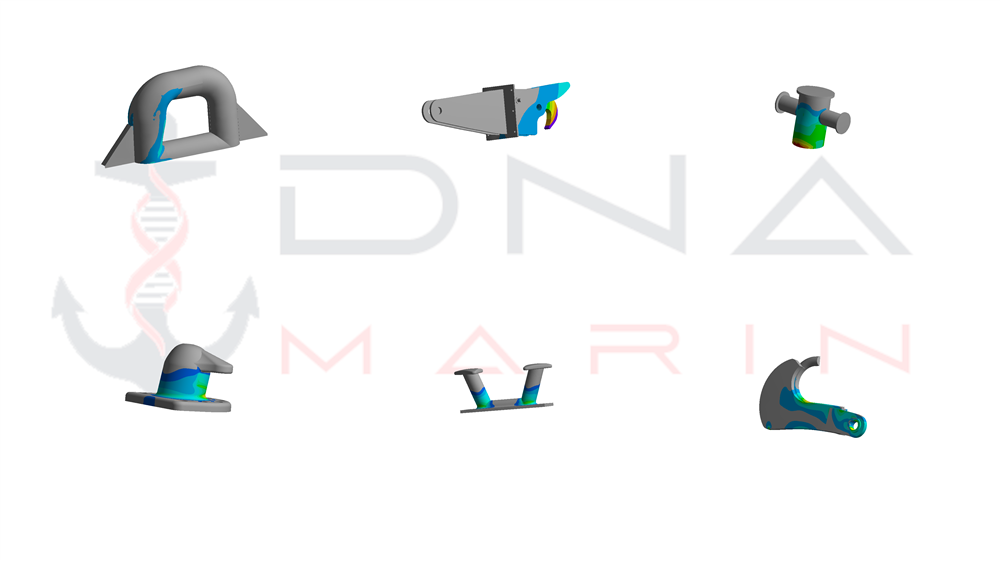 Shipboard fittings mean bollards/bitts, fairleads, stand rollers, chocks, capstans and winches used for the mooring of the ship and similar components used for the towing of the ship. Any weld, bolt or other fastening connecting the shipboard fitting to the supporting hull structure is part of the shipboard fitting and subject to any industry standard or rules. In some cases, these equipments, which are very vital for the ship, are examined by FEM.
Shipboard fittings mean bollards/bitts, fairleads, stand rollers, chocks, capstans and winches used for the mooring of the ship and similar components used for the towing of the ship. Any weld, bolt or other fastening connecting the shipboard fitting to the supporting hull structure is part of the shipboard fitting and subject to any industry standard or rules. In some cases, these equipments, which are very vital for the ship, are examined by FEM.
Supporting hull structure means that part of the ship structure on/in which the shipboard fitting is placed and which is directly submitted to the forces exerted on the shipboard fitting. For this reason, it is necessary to consider the structure as a whole.
Determination of loads which are acting on both mooring and towing equipment is essential for the equipments. For this reason, DNA Marin calculates the actual loads by taking in to account environmental loads before analysis.
 Offshore structures should be designed for severe environmental loads and strict requirements should set for the optimum performance. The nonlinear analysis of offshore platform subjected to extreme wave induced forces can play a major role in the design of the offshore structures. It introduces analytical tool to predict platform structural damages by accounting for nonlinear effects when subjected to expected still-water and characteristic sea loads which are exceeded by an annual probability. A finite element model is employed to determine the stresses and displacements in a steel jacket under combined structural and wave loadings.
Offshore structures should be designed for severe environmental loads and strict requirements should set for the optimum performance. The nonlinear analysis of offshore platform subjected to extreme wave induced forces can play a major role in the design of the offshore structures. It introduces analytical tool to predict platform structural damages by accounting for nonlinear effects when subjected to expected still-water and characteristic sea loads which are exceeded by an annual probability. A finite element model is employed to determine the stresses and displacements in a steel jacket under combined structural and wave loadings.
The wave and current forces acting on the structure is computed, which decomposes the total force into an inertia component and a drag component. The response of fixed offshore structure together with the distribution of displacement, axial force and bending moment along the leg are investigated for regular and extreme conditions. The nonlinear response analysis is quite crucial for safe design and operation of offshore platform.

